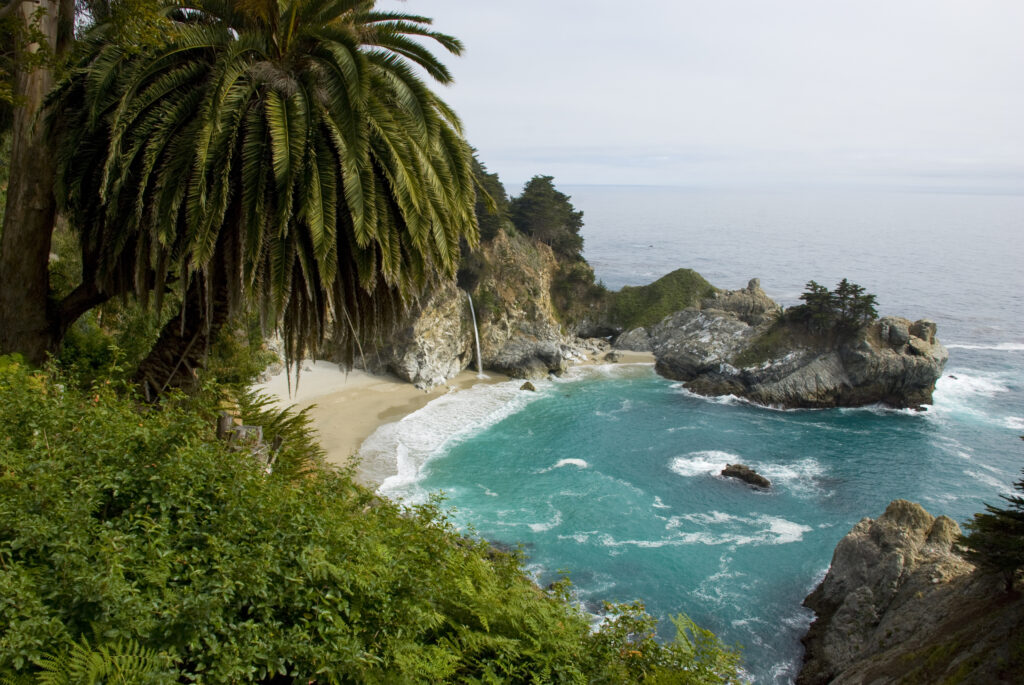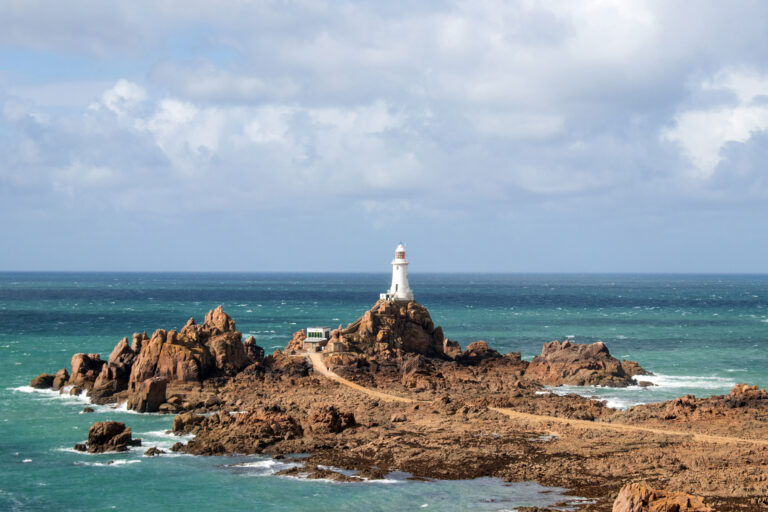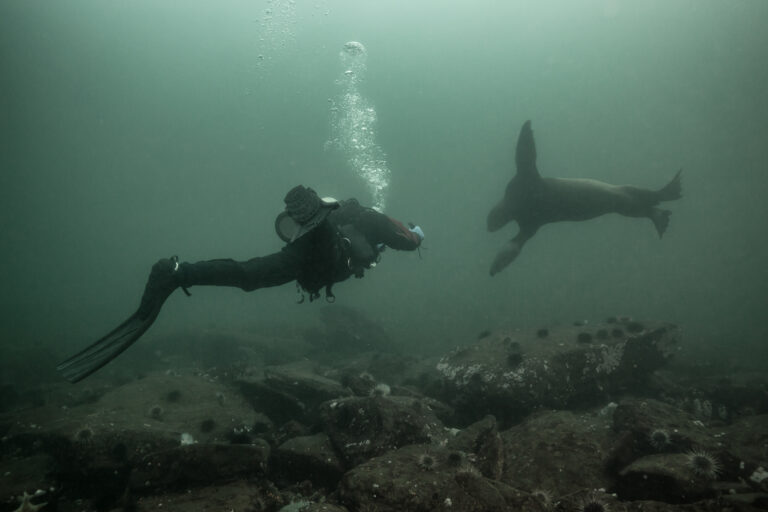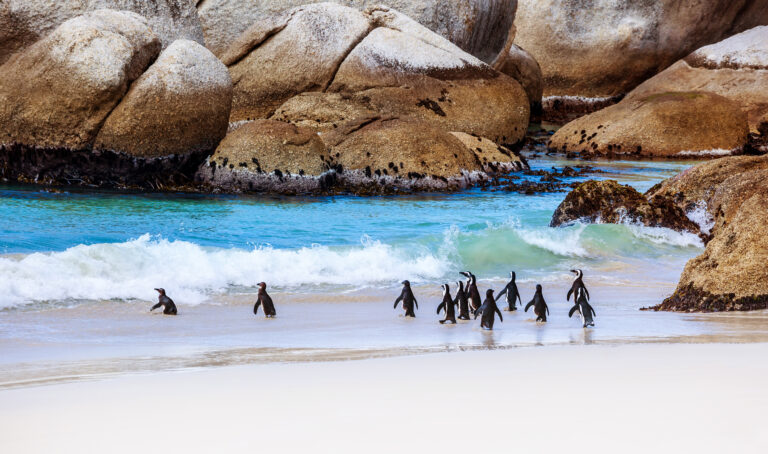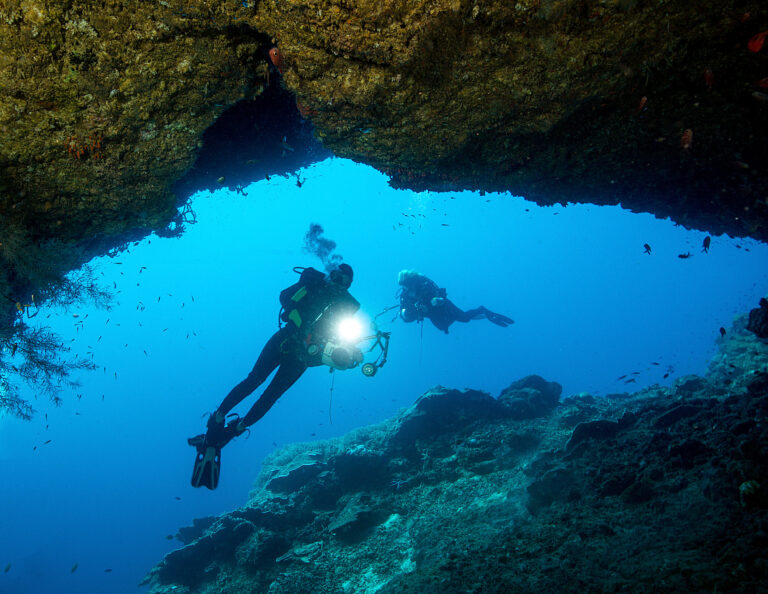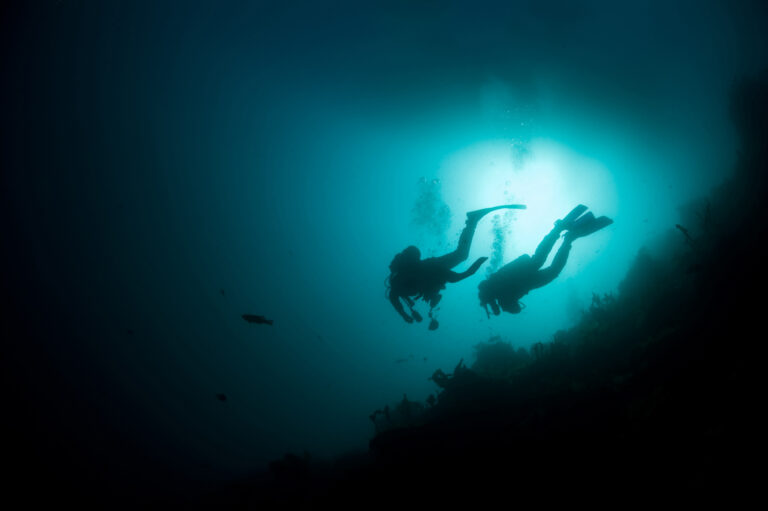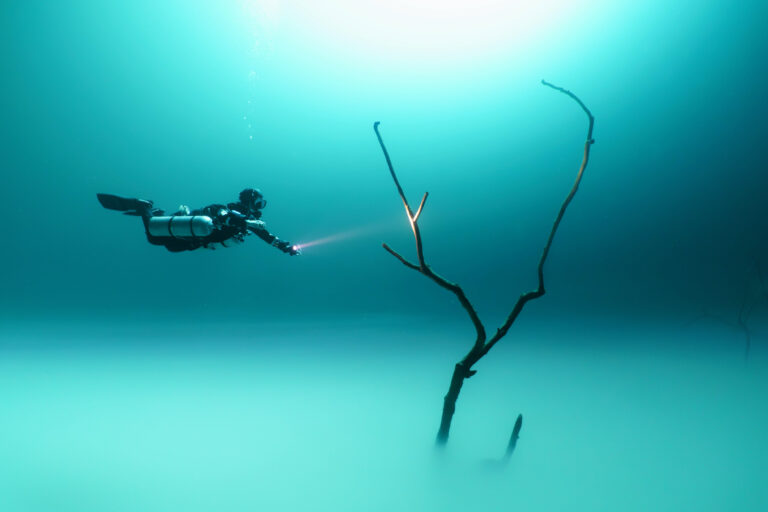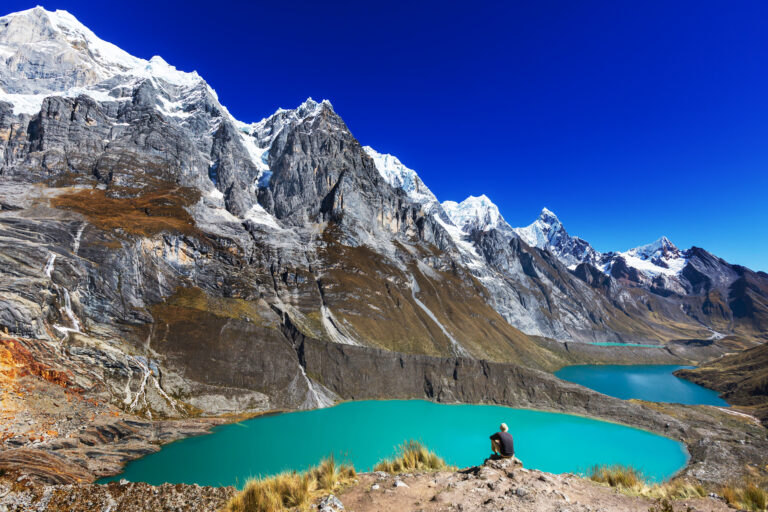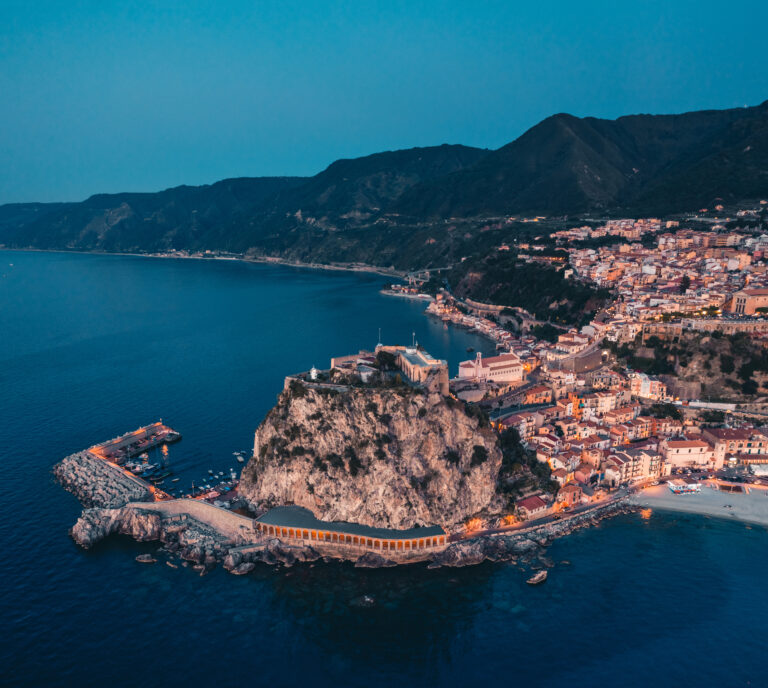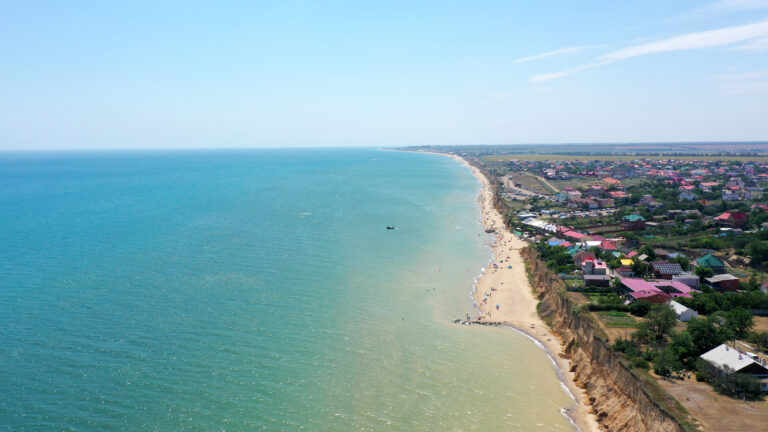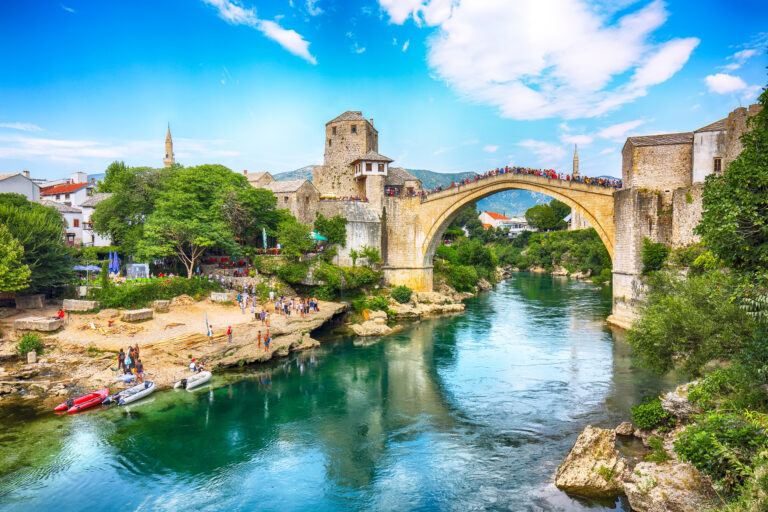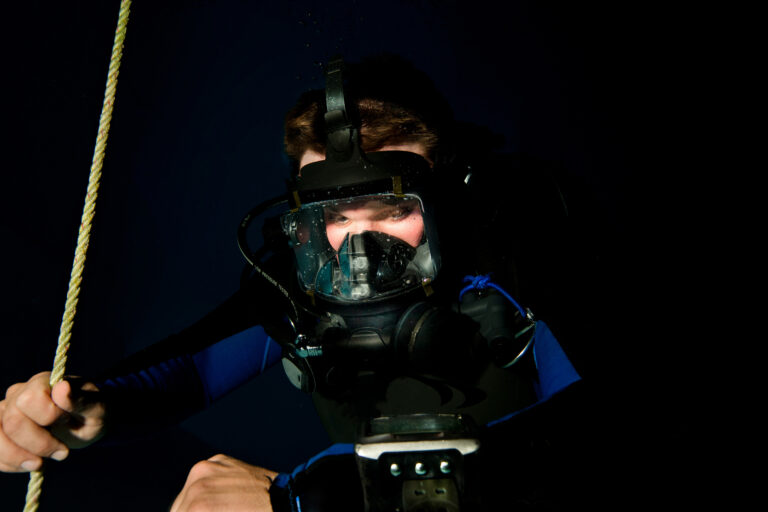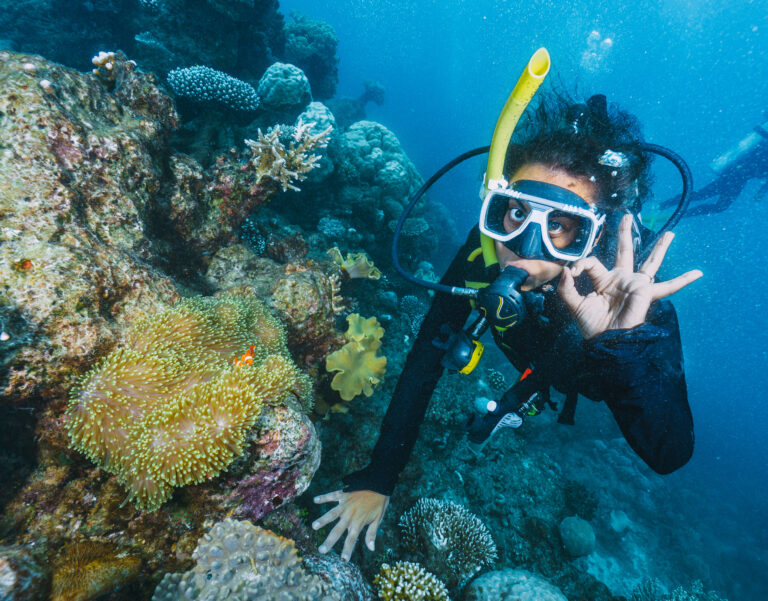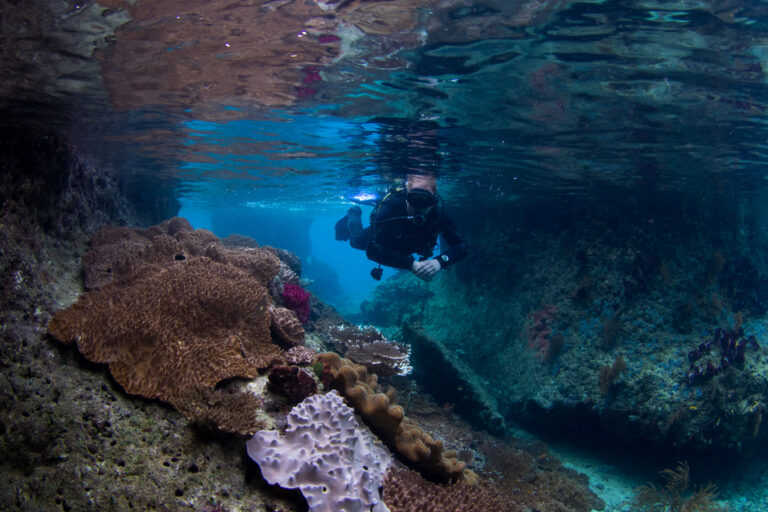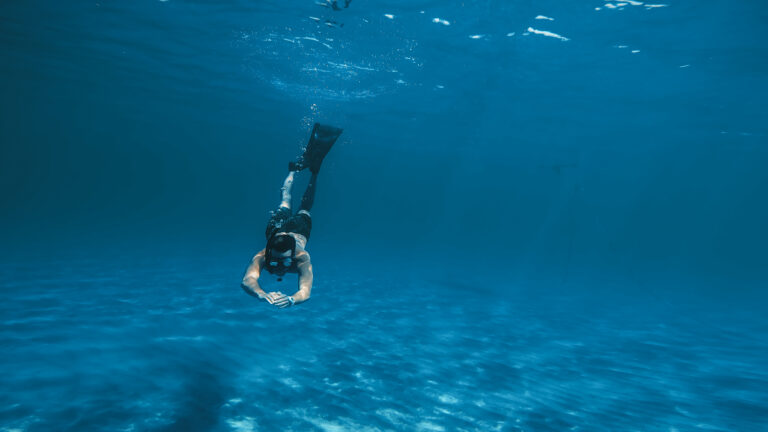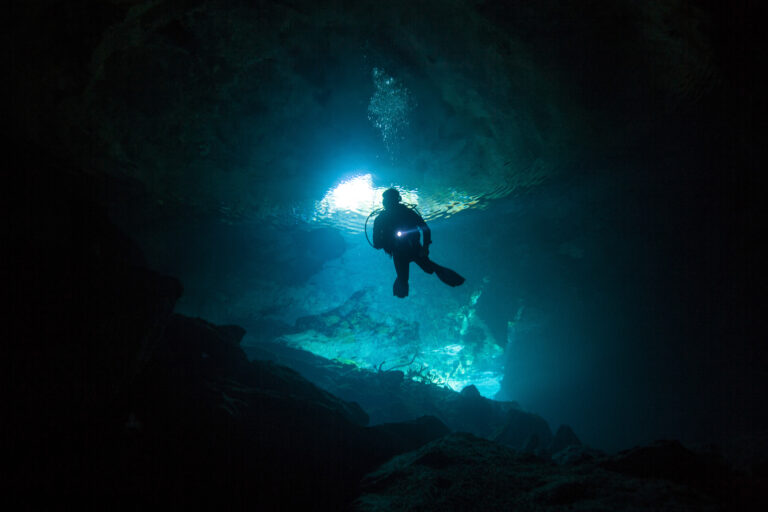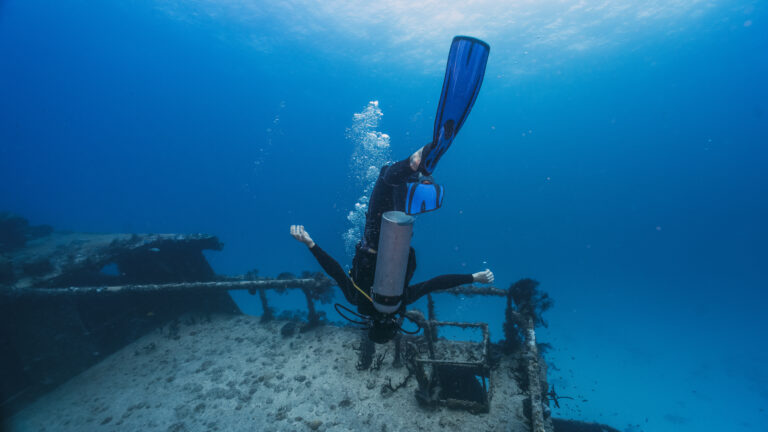SCUBA DIVERS’ TRAVEL GUIDE TO United States
The United States is a vast and diverse country that offers scuba divers a range of experiences and adventures. Whether you want to explore the tropical reefs of Florida, the shipwrecks of the Great Lakes, the kelp forests of California, or the marine sanctuaries of Hawaii, you will find something to suit your diving preferences and skill level. The United States is also home to some of the world’s best dive training facilities and instructors, so you can learn new techniques or advance your certification while enjoying the scenery. No matter what region you choose to visit, you will discover the rich history, culture, and natural beauty of this amazing country.
LOCATION AND GEOGRAPHY
The United States offers a vast and diverse array of scuba diving experiences thanks to its extensive geographical spread and variety of aquatic environments. From the tropical coral reefs of the Florida Keys and the underwater kelp forests of California’s Pacific Coast to the shipwreck-laden waters of the Great Lakes and the clear, freshwater springs in the inland states, there is something for every level of diver. The Hawaiian Islands boast lava tube swim-throughs and encounters with manta rays, while the remote territories of Guam and American Samoa provide untouched coral beauty. On the East Coast, North Carolina’s Outer Banks are known as the “Graveyard of the Atlantic,” offering advanced divers a chance to explore numerous historical wrecks. With such a wide range of locations, the United States caters to both cold-water enthusiasts and those seeking warmer climates, ensuring that divers can find spectacular underwater landscapes in any corner of the country.
VISA AND ENTRY REQUIREMENTS
Before embarking on your underwater adventure to the United States, it is crucial to understand the visa and entry requirements. Most travelers will need to obtain a visa unless they are citizens of a country that is part of the Visa Waiver Program (VWP), which allows for up to 90 days of travel without a visa for tourism or business. If eligible for the VWP, you must apply for authorization through the Electronic System for Travel Authorization (ESTA) prior to your trip. For those requiring a visa, the B-2 Tourist Visa is typically the appropriate choice for recreational activities such as scuba diving. Ensure your passport is valid for at least six months beyond your period of stay. Additionally, upon arrival, you’ll go through customs and may be asked to provide evidence of sufficient funds and a return or onward ticket. Always check the latest entry requirements with the U.S. Department of State or the U.S. embassy in your country well in advance, as regulations can change.
GETTING TO United States
Getting to the United States for an unforgettable scuba diving adventure is a straightforward process for travelers from around the globe, thanks to the country’s extensive network of international airports and its position as a major travel hub. Major gateways such as Los Angeles International Airport (LAX), Miami International Airport (MIA), and John F. Kennedy International Airport (JFK) in New York offer direct flights from numerous international cities, making access to both the Pacific and Atlantic diving sites relatively easy. Once you’ve landed, domestic flights, car rentals, and even boat charters are readily available to transport you to a myriad of diving hotspots, ranging from the tropical coral reefs of Florida Keys to the kelp forests of California, and the remote beauty of Hawaii’s volcanic islands. Whether you’re arriving from a neighboring country or crossing oceans, the U.S. has a multitude of entry points and transportation options to suit any diver’s itinerary. Remember to check visa requirements or any travel authorizations such as the ESTA (Electronic System for Travel Authorization) if you’re visiting under the Visa Waiver Program, ensuring a smooth entry to start your underwater exploration.
BEST TIME TO DIVE
The United States offers a vast array of scuba diving experiences across its diverse regions, each with its own optimal diving season. In the tropical waters of Florida and the Hawaiian Islands, diving is spectacular year-round, with the summer months offering warmer waters and increased visibility. For those seeking encounters with the great white sharks off the coast of California, the prime time is between August and October. In the northeast, the summer months of June through August provide the best conditions for exploring wrecks and marine life, as the Atlantic waters warm up. Meanwhile, the Pacific Northwest is renowned for its unique underwater landscapes and marine life, with the best visibility often from July to September, although diving here generally requires a dry suit due to cooler water temperatures. It’s important to consider local weather patterns, water temperatures, and marine life migrations when planning your dive trip to ensure the best underwater experience in the United States.
ACCOMMODATION OPTIONS
Accommodation options for scuba divers in the United States are as diverse as the underwater landscapes awaiting exploration. From the sun-kissed shores of Florida, where divers can find a plethora of beachfront resorts with dive shops on-site, to the rugged coasts of California, offering eco-lodges and boutique hotels that cater to the adventurous spirit, there’s a stay to suit every preference. In Hawaii, luxury resorts with full-service dive operations promise an unforgettable experience in the Pacific. For those venturing to more remote dive spots like the Channel Islands, liveaboard boats provide a unique opportunity to maximize water time. Budget-conscious divers might opt for family-owned inns or cozy bed-and-breakfasts in dive-centric communities like the Florida Keys, where the local dive culture is part of the charm. RV parks and campgrounds near popular dive sites like those in the Great Lakes region offer a closer-to-nature stay, ideal for those who prefer to gear up and step right into the water. No matter where in the United States you plan to submerge, there’s an accommodation option that will enhance your dive trip with comfort, convenience, and local flair.
DIVE OPERATORS AND DIVE SHOPS
In the vast and diverse underwater landscapes of the United States, dive operators and dive shops serve as the gatekeepers to some of the world’s most exhilarating scuba diving experiences. From the kelp forests of California, the shipwrecks in the Great Lakes, to the coral reefs of Florida, these establishments are staffed by professionals who prioritize safety, environmental stewardship, and the provision of unforgettable aquatic adventures. They offer a range of services, including certification courses for beginners, advanced training for experienced divers, and guided tours that cater to specific interests such as marine biology or underwater photography. Many shops also rent out top-of-the-line gear, ensuring that divers of all levels have access to the necessary equipment. With a commitment to maintaining the highest industry standards, U.S. dive operators and shops are your trusted partners in exploring the country’s underwater marvels, whether you’re looking to plunge into the crystalline waters of the Pacific or explore the historic wrecks off the Atlantic coast.
TRANSPORTATION WITHIN United States
Transportation within the United States offers a variety of options for scuba divers looking to explore the country’s vast underwater landscapes, from the tropical reefs of Florida to the kelp forests of California. Major cities and coastal areas are typically served by airports, with car rentals and shuttle services available for reaching dive sites. For more remote or island destinations, such as the Hawaiian Islands or the Florida Keys, inter-island flights and ferries are convenient options. The U.S. also boasts an extensive network of highways and roads, making road trips a popular choice for divers who prefer to bring their own gear and enjoy the scenic routes along the coasts. In some regions, local dive shops offer boat charters that transport divers directly to prime dive spots. Public transportation, such as buses and trains, can be limited in more secluded areas, so planning ahead is essential. Regardless of the mode of transport, divers should be mindful of the specific requirements for transporting dive gear, ensuring it is properly protected and adhering to any airline or transport service regulations.
CURRENCY AND PAYMENT METHODS
When traveling to the United States for scuba diving adventures, it’s important to note that the official currency is the US Dollar (USD). Credit cards such as Visa, MasterCard, American Express, and Discover are widely accepted at dive shops, resorts, and most establishments. However, it’s advisable to carry some cash for smaller dive operators, tips, and remote locations where electronic payments may not be as readily accepted. ATMs are commonly available, but it’s prudent to check with your bank about international withdrawal fees. Traveler’s checks are less commonly used but can still be exchanged at banks and some hotels. It’s also worth considering mobile payment options like Apple Pay or Google Pay, which are increasingly accepted at points of sale. Always inform your bank of your travel plans to avoid any potential issues with your cards while abroad.
LANGUAGE AND COMMUNICATION
When scuba diving in the United States, English is the primary language used for communication both above and below the water. Dive briefings, instructional courses, and safety guidelines are typically conducted in English, although in areas with a high volume of international tourists, such as Florida or Hawaii, dive operators may offer services in other languages like Spanish, French, or Japanese. Underwater, divers across the US use the standard hand signals recognized internationally within the diving community to communicate things like remaining air supply, the presence of marine life, or to signal if there’s a problem. It’s crucial for divers to familiarize themselves with these hand signals and to establish any personal or additional signals with their dive buddy during pre-dive briefings. For non-English speakers, it’s advisable to ensure that the dive operator can accommodate your language needs for a safe and enjoyable experience. Always remember that clear and effective communication is a cornerstone of safe scuba diving practices.
LOCAL CULTURE AND ATTRACTIONS
The United States offers a diverse tapestry of local cultures and attractions that complement its rich scuba diving experiences. From the laid-back, sun-soaked vibes of Florida’s Key West, where the underwater world meets the colorful history of Ernest Hemingway and the nightly Sunset Celebration at Mallory Square, to the rugged Pacific beauty of California’s coast, where divers can explore kelp forests by day and savor world-class wines in Napa by night, there’s an endless array of cultural delights. In Hawaii, the spirit of aloha permeates through the islands, with traditional luaus, hula dancing, and the chance to learn about the unique Polynesian heritage in between diving in volcanic-formed underwater landscapes. Meanwhile, the Gulf Coast states blend maritime history with Southern charm, offering opportunities to visit historic battleships and indulge in Creole cuisine after swimming with the aquatic life in Flower Garden Banks National Marine Sanctuary. Each region presents its own unique blend of attractions, from museums and historical sites to music festivals and local gastronomy, ensuring that the time spent above water is just as enriching as the time spent exploring the depths of America’s vast and varied waters.
CULTURAL ETIQUETTE AND TIPS
When scuba diving in the United States, it’s important to recognize the diversity of cultures and practices across its vast expanse, from the tropical waters of Florida to the rugged coasts of California. American dive operators generally expect punctuality and appreciate direct communication, so be sure to arrive on time and voice any concerns or needs you may have. Tipping is customary and reflects good service; for dive guides and boat crews, 10-20% of the cost of the dive trip is standard. Environmental conservation is taken seriously, so adhere strictly to guidelines regarding wildlife interactions, and never touch or take marine life. Many areas are protected, and regulations can vary by state and even by dive site, so it’s crucial to familiarize yourself with local rules and customs. Engage with local divers and staff—they often share a wealth of knowledge about dive sites and marine life, as well as insights into the local culture and history. Lastly, while the U.S. is known for its casual demeanor, always maintain a respectful attitude towards fellow divers, the ocean, and the local communities that host these incredible underwater experiences.
LOCAL LAWS AND REGULATIONS RELEVANT TO TOURISTS
When scuba diving in the United States, it is crucial for tourists to familiarize themselves with local laws and regulations to ensure a safe and lawful experience. Each state may have specific rules regarding dive flag use, which signal a diver’s presence to boats and are often mandatory. Marine protected areas, such as the Florida Keys National Marine Sanctuary, enforce strict guidelines to conserve marine life, including no-touch policies and restrictions on fishing or collecting. In California, the Marine Life Protection Act has established a network of marine protected areas, each with its own set of rules. Additionally, certain states require proof of dive certification and may have regulations on the minimum age for divers. It’s also important to be aware of regulations regarding the interaction with wildlife; for example, touching or feeding fish, or disturbing coral, can be prohibited. Always check with local dive shops or authorities for the most current information on diving regulations, as they can change and may carry heavy fines or penalties for non-compliance.
SAFETY TIPS AND EMERGENCY CONTACTS
When diving in the diverse underwater landscapes of the United States, safety should be your paramount concern. Always dive within your certification limits and ensure that your equipment is well-maintained and appropriate for the conditions, whether exploring the kelp forests of California, the shipwrecks of the Great Lakes, or the coral reefs of Florida. It’s crucial to stay updated on local weather and water conditions, as they can change rapidly. Dive with a buddy and maintain clear communication throughout your adventure. Familiarize yourself with the local marine life to avoid dangerous encounters. In case of an emergency, know the location of the nearest decompression chamber and have a plan to access it. Keep handy the contact information for the U.S. Coast Guard (in coastal areas) and local emergency services, which can be dialed nationwide at 911. Additionally, it’s wise to have the contact details for DAN (Divers Alert Network) at +1-919-684-9111, a dedicated dive emergency support network that can provide immediate assistance and advice. Remember, thorough preparation and adherence to safety protocols are the keys to an enjoyable and secure scuba diving experience in the United States.
HEALTH AND TRAVEL INSURANCE
When planning a scuba diving trip to the United States, it’s crucial to consider your health and travel insurance options. The US healthcare system can be extremely costly for those without adequate coverage, and diving-related injuries may require specialized treatment. Ensure that your travel insurance policy includes coverage for scuba diving activities, as some insurers consider it an adventure sport and may exclude it from standard policies. Look for policies that cover hyperbaric chamber treatment, medical evacuation, and repatriation in case of a diving emergency. Additionally, verify that your insurance provides sufficient coverage for any pre-existing conditions that could be exacerbated by diving. It’s also wise to carry your insurance documents and emergency contact information with you at all times. Remember, while the US offers some of the world’s most diverse diving experiences, from the tropical waters of Florida to the kelp forests of California, being prepared with the right insurance will ensure peace of mind beneath the waves.

